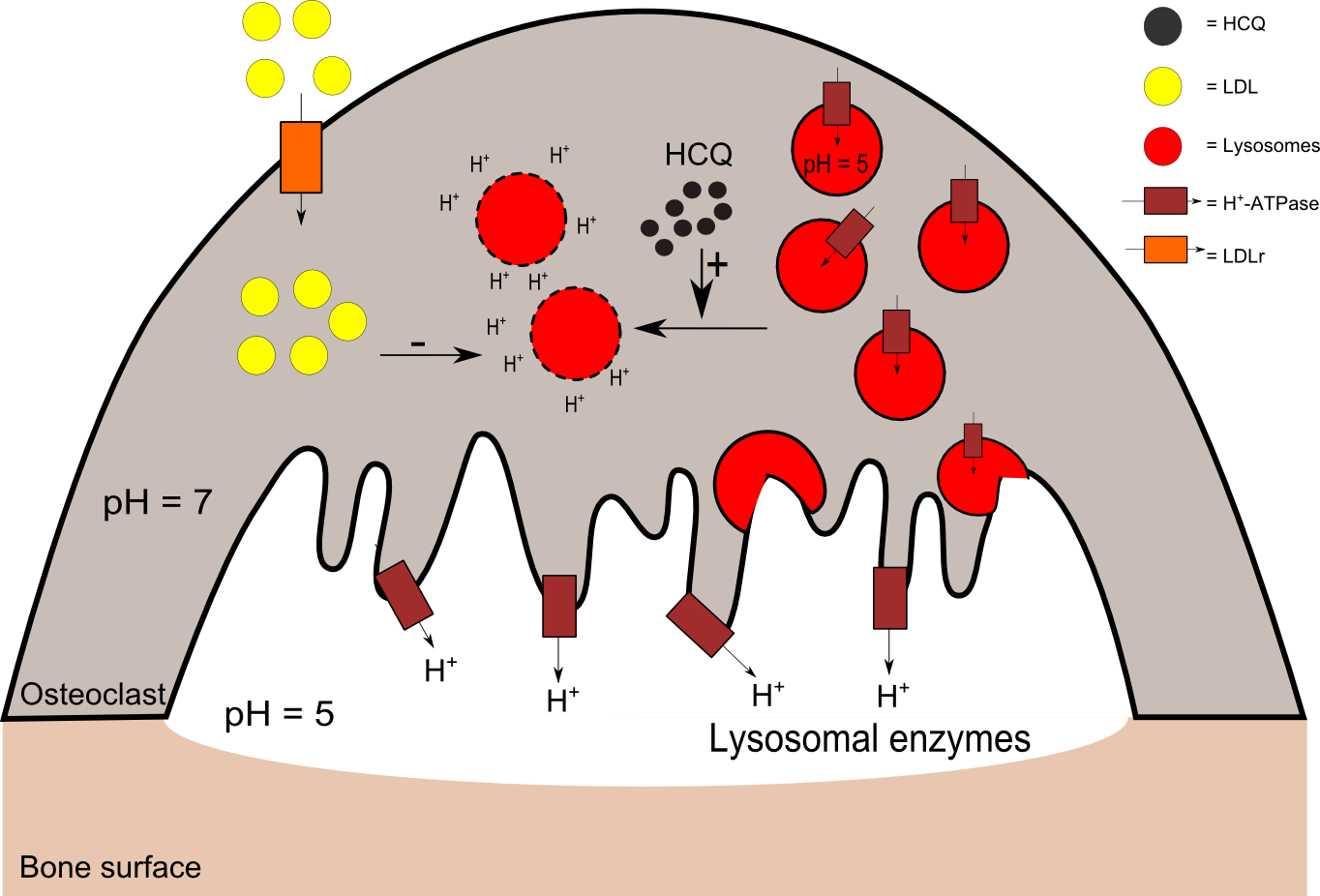Session Information
Date: Sunday, November 13, 2016
Title: Osteoporosis and Metabolic Bone Disease – Clinical Aspects and Pathogenesis - Poster
Session Type: ACR Poster Session A
Session Time: 9:00AM-11:00AM
Background/Purpose:
We recently showed that patients with primary Sjögren Syndrome (pSS) have significantly higher bone mineral density (BMD) in the lumbar spine and femoral neck compared with healthy controls. The majority of those patients (69%) were using hydroxychloroquine (HCQ), which may have favourable effects on BMD. The aims of this study are to evaluate the effect of HCQ on osteoclast function and to identify a potential mechanism of action.
Methods:
Osteoclasts were cultured from PBMC-sorted monocytes for 14 days. All cultures were treated with different HCQ doses (0, 1 and 5 µg/ml). At multiple time-points, staining with an acidification marker (acridine orange) was performed as measure for intracellular pH. The ratio of FITC (neutral pH) vs. TRITC (acidic pH) fluorescence intensities were analyzed. Additionally, a fluorescent cholesterol uptake assay was performed and fluorescence intensities were analyzed as measure for cholesterol uptake.
Results :
The difference in surface resorption by osteoclasts was significant between HCQ dose 1 and 5 µg/ml vs. control (4.3 ± 1.0% for HCQ dose 1 µg/ml and 1.6 ± 0.8% for HCQ dose 5 µg/ml vs. 16.2 ± 3.2% for the controls, P = 0.037 and P = 0.011 respectively). We also found that the FITC:TRITC ratio of the HCQ 5 µg/ml group was significantly reduced (lower intracellular pH) at day 12 and day 14 following continuous HCQ treatment compared to the controls (day 12: 1.06 ± 0.05 for the control vs. 0.87 ± 0.03 for HCQ 5 µg/ml, P = 0.034 and day 14: 0.92 ± 0.03 for the controls vs. 0.59 ± 0.03 for HCQ 5 µg/ml, P = 0.037). Furthermore, cholesterol uptake was significantly increased in HCQ 5 µg/ml compared to control (day 7: 31673 ± 1922 RU for HCQ 5 µg/ml vs. 14583 ± 3217 RU for the control, P = 0.0015 and day 11: 18297 ± 229.7 RU for HCQ 5 µg/ml vs. 4902 ± 259.6 RU for the controls, P = 0.0003). In addition, the LDL receptor gene expression was significantly increased in the HCQ 5 µg/ml cells compared to the controls (P = 0.03).
Conclusion :
In agreement with our clinical data, we demonstrate that HCQ suppresses bone resorption in vitro. We hypothesize that women (with pSS) benefit from HCQ since their BMD decreases dramatically in the first few years following menopause due to enhanced osteoclast activity.
We also showed that HCQ decreases the intracellular pH in mature osteoclasts and stimulates cholesterol uptake. We postulate that HCQ induces osteoclastic lysosomal membrane permeabilization (LMP) leading to apoptosis and associated decreased resorption. However, the osteoclast tries to decrease LMP by increasing cholesterol uptake and LDL expression (Figure).
To cite this abstract in AMA style:
Both T, Daele PLV, Van der Eerden B. Hydroxychloroquine: A Potential Treatment for Osteoporosis By Osteoclast Inhibition! [abstract]. Arthritis Rheumatol. 2016; 68 (suppl 10). https://acrabstracts.org/abstract/hydroxychloroquine-a-potential-treatment-for-osteoporosis-by-osteoclast-inhibition/. Accessed .« Back to 2016 ACR/ARHP Annual Meeting
ACR Meeting Abstracts - https://acrabstracts.org/abstract/hydroxychloroquine-a-potential-treatment-for-osteoporosis-by-osteoclast-inhibition/

